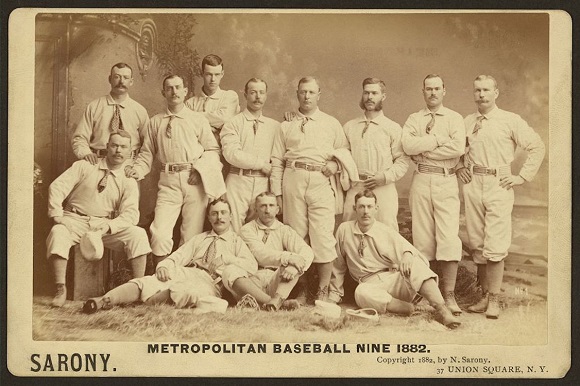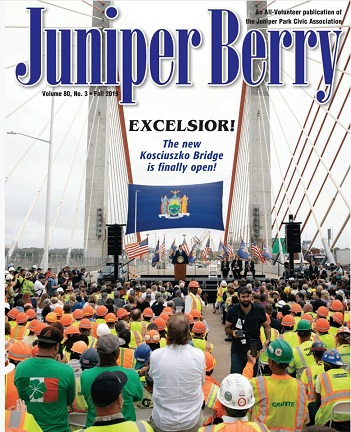There has been increased interest in the history of the New York Mets as the team this year celebrates the 50th anniversary of its 1969 miracle season. So, we thought you’d like to know about the Mets’ very first championship and who originally was responsible for it. But I’m not referring to the 1962 National League expansion version of the Mets managed by Casey Stengel. The original New York Metropolitans Base Ball Club was actually formed in 1880, the same year that the Metropolitan Opera and Metropolitan Museum of Art were established (and just 7 short years after the Williamsburgh-Jamaica Turnpike was renamed Metropolitan Avenue). In this era, the term “metropolitan” meant that it was superb. And for a time, the team was.
The original Metropolitans came about when the owner of a large Lower East Side tobacco plant, John Day, and a shortstop from Boston, Jim Mutrie, joined forces to invest in a new team. In September 1880, the “New York Metropolitans Base Ball Club” debuted on a field in Brooklyn. This field wasn’t deemed suitable, however, so a few weeks later they took up residence at a polo field located inside the northeastern corner of Central Park. (A larger version of what came to be known as the Polo Grounds would later be home to the New York Giants and the current Mets franchise.) In 1882, the team joined the American Association, a league that was only active from 1882-1891. This was an era when the game was played without gloves, helmets and catcher’s masks.
It was in Central Park that the Mets won their league’s championship in 1884. But they then lost 3 straight games to the Providence Grays of the National League in what some baseball historians consider to be “The First World Series.”
David Orr was one of the best hitters in baseball during his major league career. He was with the Mets from 1883-1887, an essential member of their championship team. His lowest seasonal batting average was .305, and his career batting average of .342 today ranks him at eleventh of all time, right below Babe Ruth (and the third highest average for a right-handed hitter). He hit 31 triples in 1886, which was a major league record that stood for 25 years, only exceeded once. Orr also played solid defense with a lifetime .973 fielding average.
After founding another more profitable team called the Gothams in 1883 (which later became known as the Giants), Day and Mutrie sold the Metropolitans in 1885 to a land developer named Erasmus Wiman, who promptly moved the team to Staten Island. His motivation was to use the team as a marketing tool in an attempt to encourage residential growth and increase the profits of the ferry service he also owned. The team played at the St. George Cricket Grounds, which was very close to where the minor league Staten Island Yankees’ stadium is located today.
The developer’s scheme was unsuccessful, and Wiman soon sold the team for $15K to a rival franchise named the Brooklyn Bridegrooms (later known as the Brooklyn Dodgers) who relentlessly signed the Metropolitans’ best players, including Orr. The original Mets played their last game in 1887 before the team was dissolved.
The National League announced in 1961 that New York would be getting an expansion team to fill the void left by the dearly departed Dodgers and Giants. The new club’s owners chose to revive the name “New York Metropolitans” in homage to the original team and adopted the team colors of Giant orange and Dodger blue. With the advent of interleague play in 1997, the current Mets finally played professional ball in the Bronx. It took a span of 117 years for a team called the “Metropolitans” to play major league baseball in all 5 boroughs of the City.




